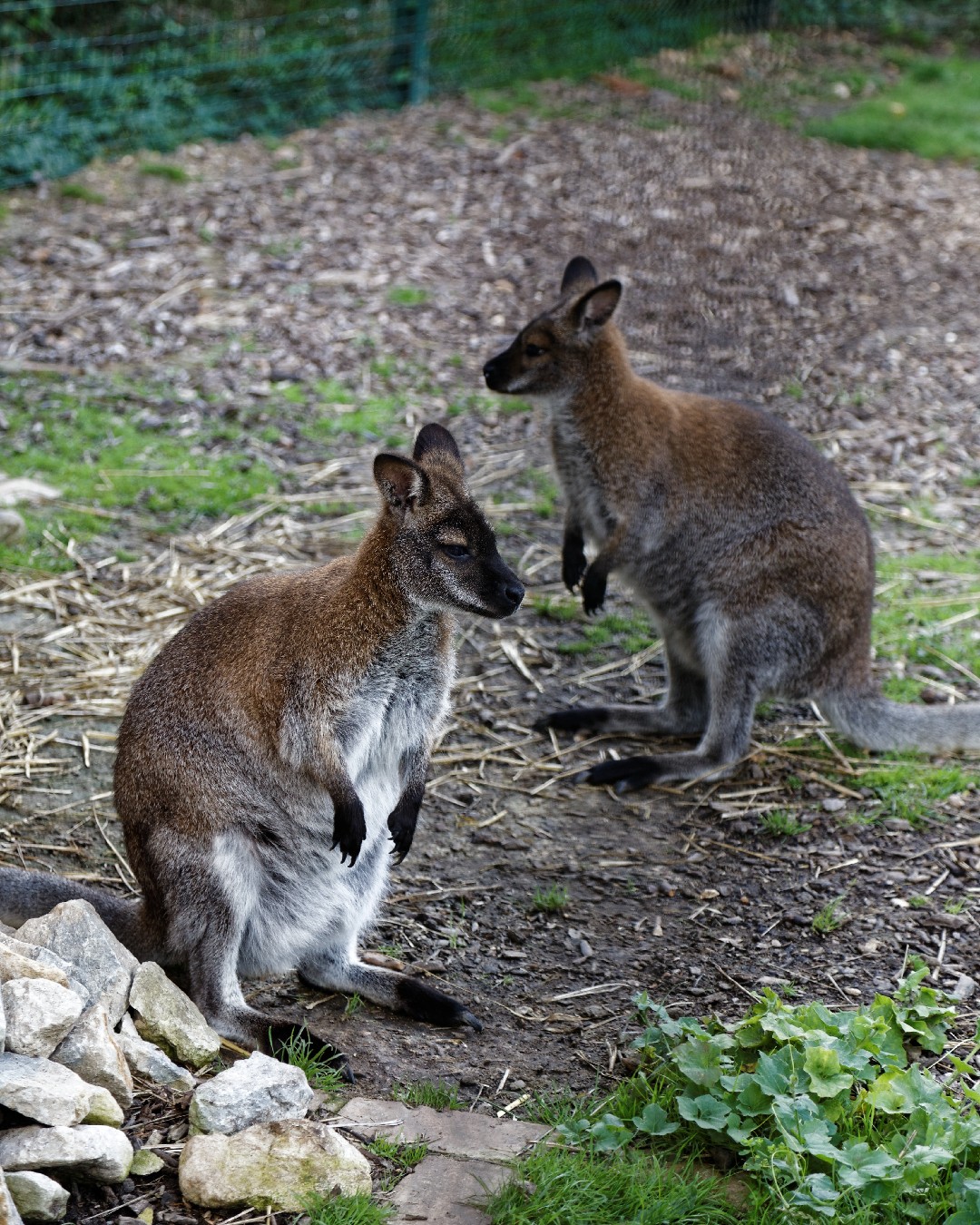Swamp wallaby
A species of Swamp wallaby, Also known as Black-tailed wallaby, Black pademelon, Black stinker Scientific name : Wallabia bicolor Genus : Swamp wallaby
Swamp wallaby, A species of Swamp wallaby
Also known as:
Black-tailed wallaby, Black pademelon, Black stinker
Scientific name: Wallabia bicolor
Genus: Swamp wallaby
Content
Description General Info
 Photo By Acabashi , used under CC-BY-SA-4.0 /Cropped and compressed from original
Photo By Acabashi , used under CC-BY-SA-4.0 /Cropped and compressed from original Description
The species name bicolor comes from the distinct colouring variation, with the typical grey coat of the macropods varied with a dark brown to black region on the back, and light yellow to rufous orange on the chest. A light coloured cheek stripe is usually present, and extremities of the body generally show a darker colouring, except for the tip of the tail, which is often white. The gait differs from other wallabies, with the swamp wallaby carrying its head low and tail out straight. The average length is 76 cm (30 in) for males, and 70 cm (27.5 in) for females (excluding the tail). The tail in both sexes is approximately equal in length to the rest of the body. Average weight for males is 17 kg (37 lb), females averaging 13 kg (29 lb). The swamp wallaby has seven carpal bones in the wrist (humans have eight). 
General Info
Lifespan
12-18 years
Diet
Swamp wallaby is a predominantly folivorous species, with a strong preference for consuming various types of grasses and shrubs. The animal may occasionally indulge in fruits, seeds, and insects when available.
Appearance
Swamp wallaby is a medium-sized marsupial with a robust body covered in shaggy fur. Its fur mainly displays a dark hue of grey or brown, with lighter coloration on the underparts. Swamp wallaby's most distinctive feature is its large, powerful hind legs and tail used for hopping, and its ears are notably large and pointed. Notable sexual dimorphism is visible, with males being larger and more muscular than females.
Behavior
Swamp wallaby is predominantly solitary and nocturnal, foraging on a variety of plants during the night using its keen sense of smell. It exhibits a unique behavior of shaking the head suspiciously when approached. The species is non-territorial, however, it uses communal latrine sites for defecation, possibly as a form of communication.
Population
Increasing
Scientific Classification
Phylum
Chordates Class
Mammals Order
Diprotodontians Family
Macropods Genus
Swamp wallaby Species
Swamp wallaby